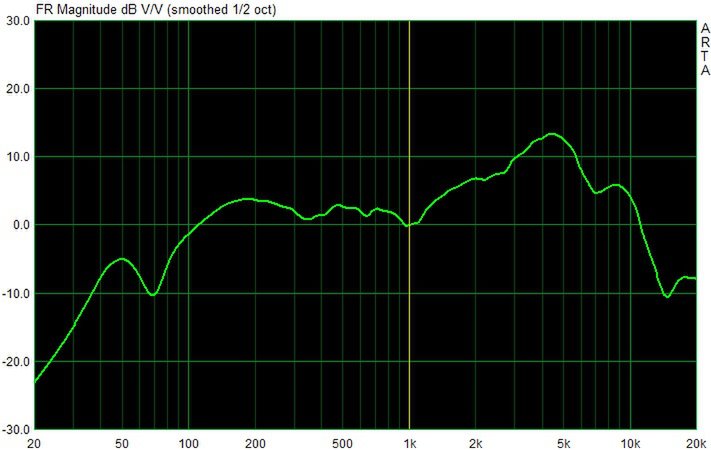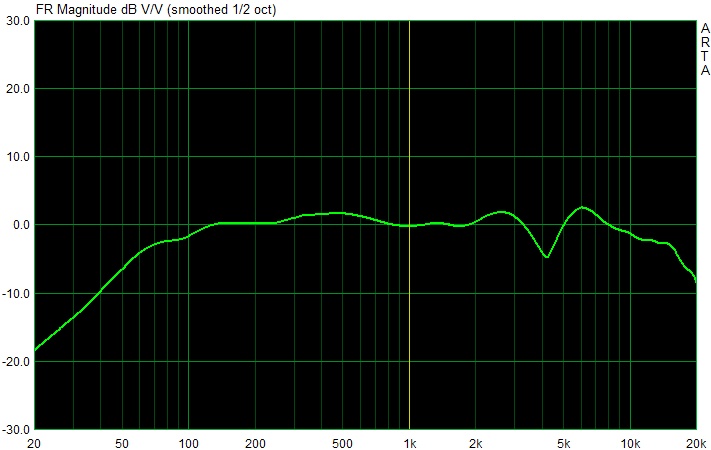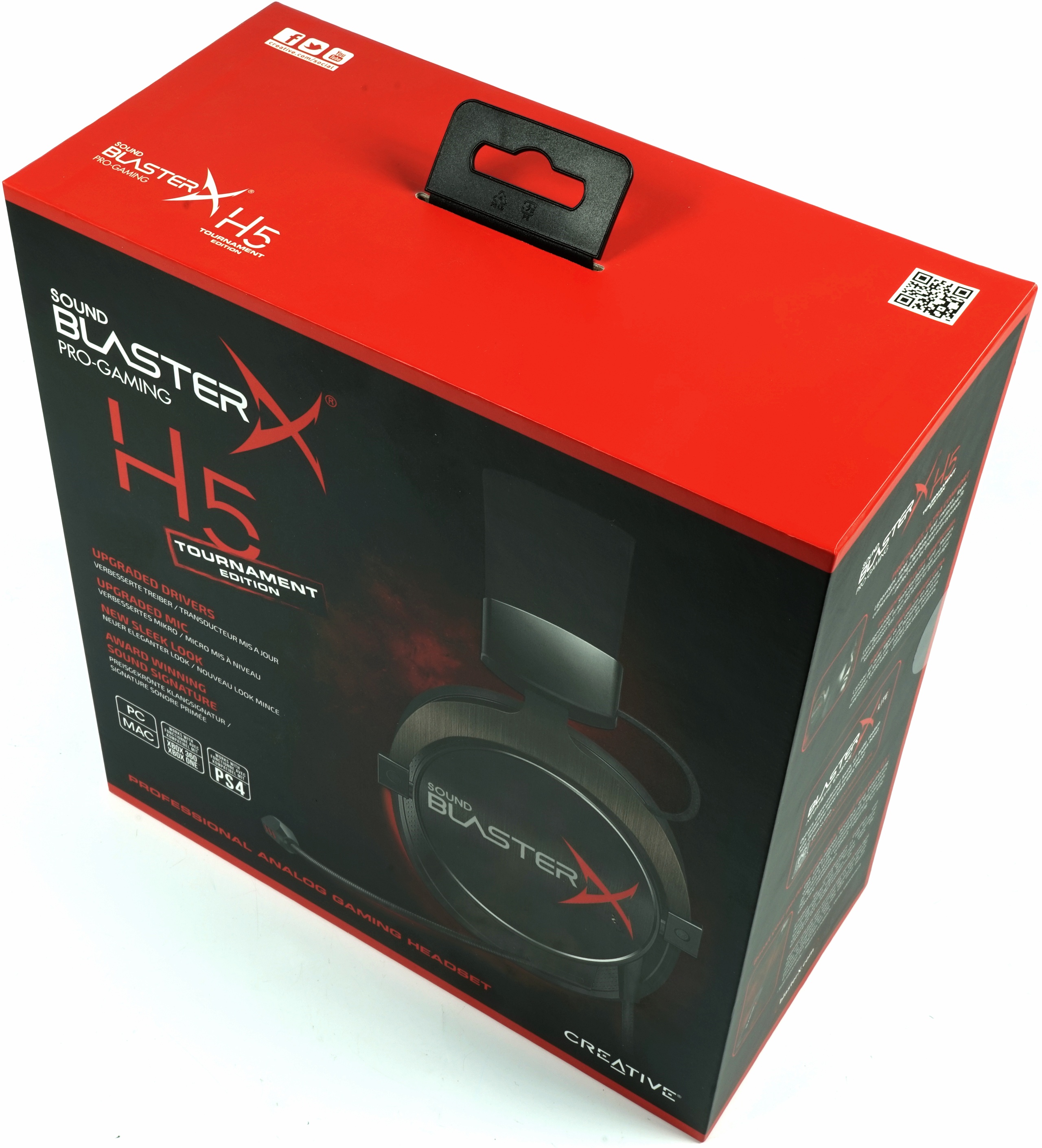Microphone measurement and sound check
First, we measure the real frequency range of the microphone to meet readers' feedback. For this we use our measuring room again, but we virtually reverse the process. Of course, a true reciprocity calibration as a starting point exceeds our current possibilities and the effort far exceeds the benefits. That is why we have sought a compromise.
However, since we have a calibrated measuring microphone, a comparison measurement and the calculation of the differences can at least produce a curve that is easily usable for our purpose. So it is not the exact frequency response of the microphone, we would not presume that, but a meaningful approximation, which also underpins our subjective impression.
Measuring and audible, it can be seen that it is under approx. 100 Hz gives a stronger level drop, whereby we rather like the peak at 50 Hz. The old microphone of the H5 was a little better. Also the 12dB increase at approx. 4.5 KHz is certainly so intentional, but actually too much. The Sibilants are also very pronounced, but without dominating too much.

The sound is rather warm, also due to the existing upper bass and the present lower middles. The fairly balanced course between 100 Hz and 1 KHz suits male and female voices alike. The sensitivity is fine, the microphone also acts much louder purely subjectively.
Headphone measurement
As we test, we have already explained in the basic article "Gaming Headsets: Myth, Truth and How we Test" very detailed and transparent, because with the usual audio-swirl of bass thunderstorms and high-pitched whips you can't really get any further. You have to be able to listen subjectively well and measure at the same time. Let us start with the latter.
If you look at the curve, it looks up to the small dent at approx. 4.25 KHz with the corresponding edges in the flanks very well. However, the approx. 4db Level drop is tolerable because they are in one area. where the human ear is one of the most sensitive. If there is any difference to the normal H5, it is this small slump and the slightly stronger bass foundation that we could also attribute to tooling.

We also played something with the low bass by raising it at 64 and 32 Hz. However, the level strength and also the transparency are then somewhat lost. You can do it, but you don't have to.
Subjective listening experience – Original against optimization
Let's also test subjectively what you have in the original on your ear. We used to operate the headset continuously for two days as usual at a source with a decent level, in order to give the one-game fanatics a chance.
Bass
Test the lowest bass in the subcontraoctave (16.4 Hz to 32.7 Hz) with a recording of Bach's Toccata and Fugue in D minor (19 and 25 Hz) and the Festival Overture 1812 by Tchaikovsky (10 Hz and 12.5 Hz). The same applies to the lower ranges of the contraoctothe (32.7 to 65.4 Hz). The big bass drum (kick drum), which in the U-music is a welcome companion and usually on approx. 55 to 60 Hz, this assessment will then be rounded off.
The bass is deep and very soft, but also audibly more restrained, but still present enough. From approx. 40 Hz it gets a bit thin down, but that doesn't matter. It is not a completely closed system. The contraoctave is audible in large parts present, which certainly calms down a little. If, on the other hand, you like it dullly blubbering, you have to improve on the equalizer or buy a bass bomber.
The large bass drum comes sufficiently crisp and the level strength is surprisingly high for this price range. The settling behavior is also fine and overall you can state that the bass is not a highlight, but also not a painful acoustic wound.
The upper bass up to 150 Hz, in which also the Great Octave (65.4 to 130.8 Hz) is located, houses the basic language frequency of the male voice and decides very strongly on the true-to-life reproduction of male vocals.
This area sounds very balanced and quite natural, although not analytical. The male vocals are played very neutrally, the instruments are not distorted. Overall, the resolution is very good and also does not allow sources playing too dominant to perform well and locate them. There is a bit of a lack of heat, which is due to the slight bass drop below 100 Hz.
Frequency range
The lower middles (also basic tone range) are approx. 150 to 400 Hz. Together with the already mentioned upper bass, this area plays a very important role for the subjectively perceived heat or bass. Fullness of the sound. The basic language frequency of female voices can be found in this area.
Female vocals also get to the point very neatly. However, the timbre of the vocals and recorded instruments tends to be neutral and even cool at the top, even with a slight penchant for the analytical. You can like it, but you don't have to. Here, the headset is also subjectively slightly different from the previous model, which sounded rather warmer.
The upper mids between 400 Hz and about two KHz contain a mark at a KHz, which is still considered a reference for many measurements. Unfortunately, this is often noticeable with cheaper devices, as manufacturers often try to overemphasize this frequency. This area does not play an insignificant role in gaming either, and balanced playback contributes significantly to good spatial resolution.
All instruments offer the required nuances and the resolution is already quite good. Many details can inspire and the stage, as well as the subjectively perceived quality of spatial resolution are on a very good level. However, some headsets in the range above 100 euros and good hi-fi headphones can certainly offer even more, but that would be whining at a higher level.
An orchestra seems (purely subjectively) quite wide-ranging, the location is quite precise. If one listens to a recording of a chamber concert from a rather small and strongly subdued room, the first deficits in precision are noticeable, which one does not perceive with more complex sources. But as already written: The headset can also make music, but not only. Because Mrs or Mr Gamer will certainly set other premises and then serve them quite well.
High-pitched range
Between two and about 3.5 KHz, human hearing is most sensitive, especially since this area of the lower heights is responsible for the good overtone reproduction of the human voice. This frequency range is crucial for the recognition of a voice or instrument; in this context, one also speaks of the respective timbre.
It sounds a little more natural and neutral than you might have expected from the indented measurement curve. Especially the location in the game is at the level of the action at all times. Sure, it might be even better (even), but there are significantly worse headsets for similar money. In the right relation, so it fits. The music suffers rather less, only some vocals lose a little expressiveness in the timbre.
The middle heights (3.5 to six KHz) decide on the sound or failure of the speech reproduction as a whole, because the S- and hissing (Sibilants) fall into this range. The upper heights then reach up to approx. ten KHz to move into the super high tone.
The small dent continues here at the lower end, but it still sounds mostly neutral. The Sibilants are going so well and the super high tone is still well present. From approx. However, 16 KHz the levels drop more, which hardly anyone should hear, unless he is a dog, a bat or well under 20 years old.
Summary and conclusion
 The currently called 70 Euro street price is a price/performance bang, since the mouse does not bite a thread. You get an almost perfectly fitting, ultra-light and very well-finished headset, which is far from being a dröger plastic bomber. Material selection, appearance and feel fit the price just as well as the sound as such.
The currently called 70 Euro street price is a price/performance bang, since the mouse does not bite a thread. You get an almost perfectly fitting, ultra-light and very well-finished headset, which is far from being a dröger plastic bomber. Material selection, appearance and feel fit the price just as well as the sound as such.
Susi Sorglos gets a nice all-round music package at the end and Klaus-Kevin Normalzocker a fine headset for his floppy ears. However, you can't expect a low-flying bass bomber, as you have to choose from Dr. Dre in the grabbel table. But what really suits is the lubrication-free transparency, which does not matter to you even after hours of intensive use.
By the way, this also applies to the climate comfort zone, because you won't really get into a sweat when it comes to price or longer wearing. This part is more likely to be taken over by the competitors, because the Creative SoundblasterX H5 Tournament Edition is probably one of the most underrated products.
And what does Creative get from this update? The packaging is again kept much simpler and the accounting in Singapore is certainly hitting the price savings from box, tooling and drivers with a picco sledge every day. Because somewhere the EUR 70 must come from. But let them be allowed to do so.
































Kommentieren